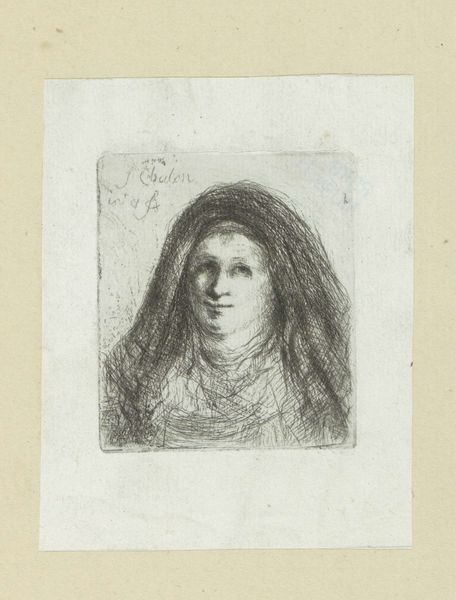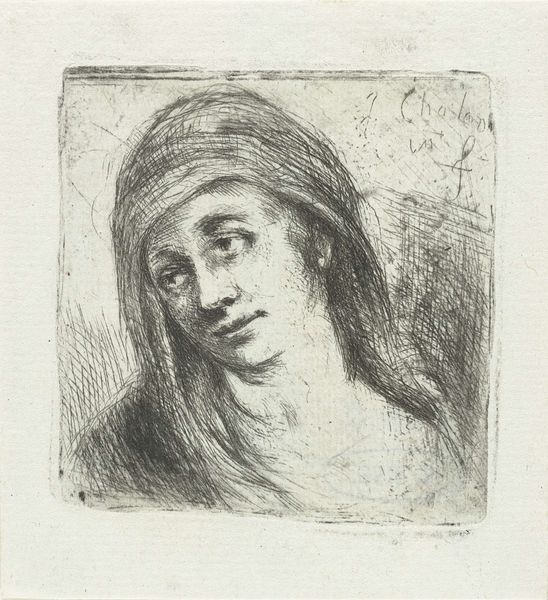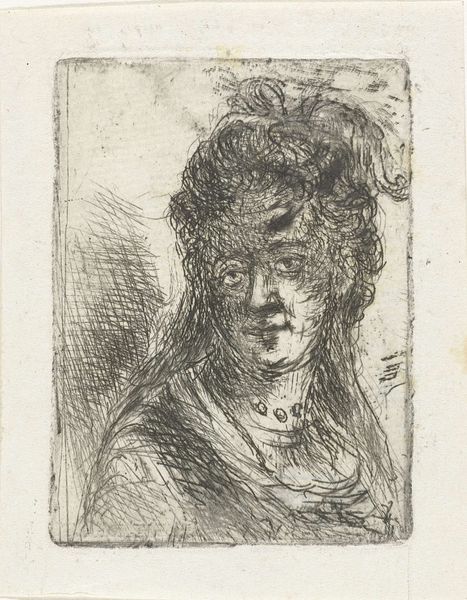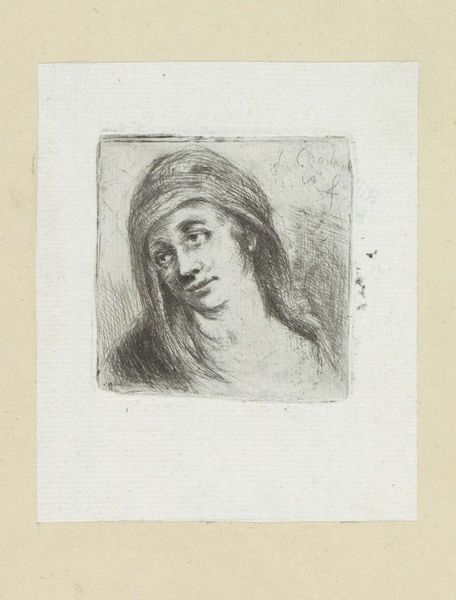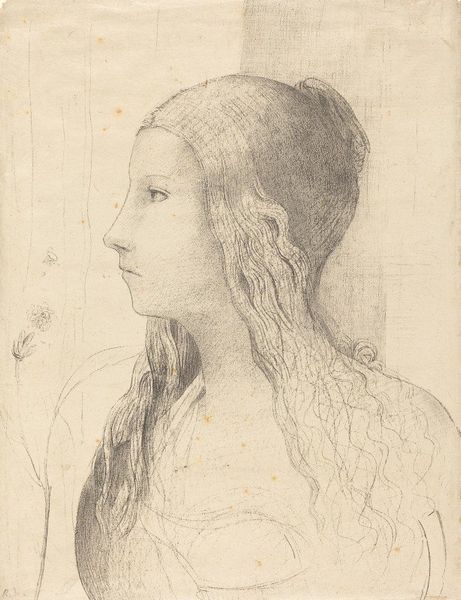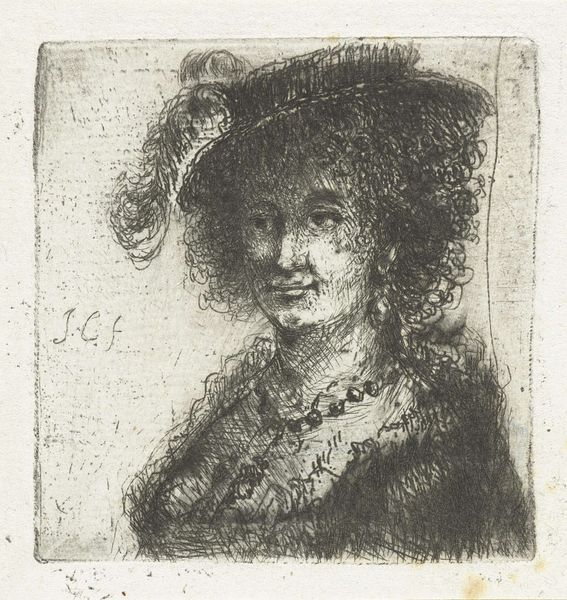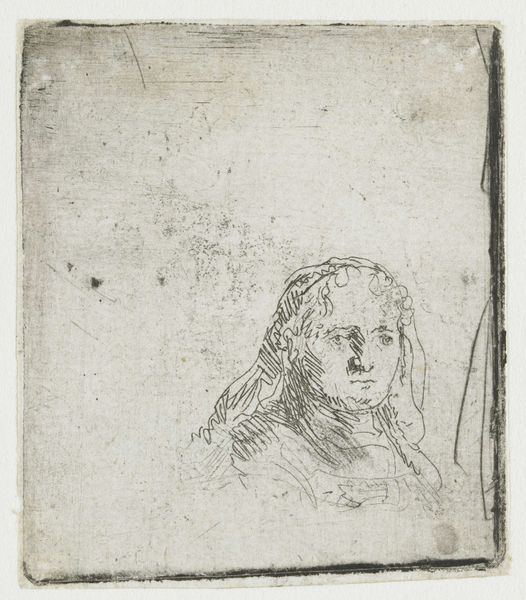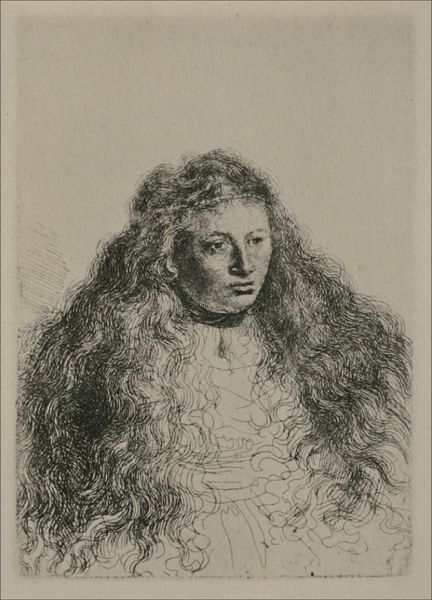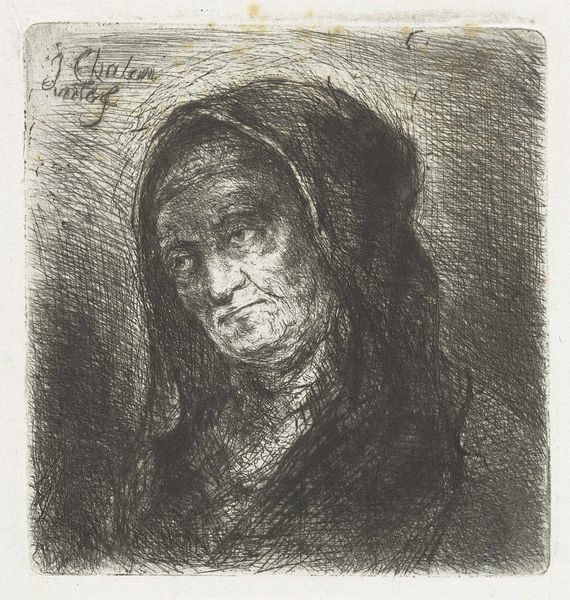
Dimensions: height 67 mm, width 58 mm
Copyright: Rijks Museum: Open Domain
Editor: Here we have Jan Chalon's "Volwassen vrouw met hoofddoek," made sometime between 1748 and 1795 using etching. The portrait has this wonderfully immediate, sketch-like quality, even though it's intaglio. What strikes me most is how her gaze avoids the viewer. What can you tell me about it? Curator: It's intriguing, isn't it? The apparent modesty in her averted gaze needs situating in its socio-cultural moment. Portraiture, even in seemingly simple etchings like this, served complex functions in the 18th century. Who was this woman? Was this commissioned, or a study? Etchings were reproducible, allowing images to circulate more broadly. Think about the implications for identity and representation. Editor: So, was this portrait potentially meant for wider consumption, almost like a proto-photograph in spreading an image? Curator: Exactly! Consider how gender norms dictated female representation. Portraits often emphasized virtue and domesticity. Her headdress, that dark covering, it obscures her rather than reveals. Is this an intentional flattening? Does it speak to certain class identities? Could the artist’s choices be a form of commentary, a subversion? Editor: That's fascinating. It makes you wonder what a contemporary audience would read into the starkness and anonymity. Was it empowering, restrictive, or simply… ordinary? Curator: Precisely. It pushes us to unpack the power dynamics at play in representation, not just the artist's intent, but the audience's reception and the institutions that facilitated its circulation. It invites more questions, right? What's our relationship as the modern viewers interpreting this image today? Editor: I agree. Thinking about who gets represented, how, and why, really opens up this seemingly simple drawing. Thanks for sharing a wider vision on that artwork. Curator: And thank you, your observations enrich our understanding too! Art history is always evolving, shaped by the questions we ask and the perspectives we bring.
Comments
No comments
Be the first to comment and join the conversation on the ultimate creative platform.
